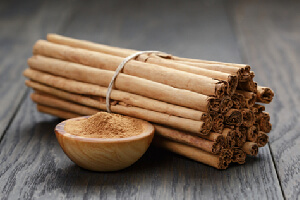Why Cuban Link Chains Are So Expensive
Narrator: Even in the high-end world of jewelry, Cuban link chains are a symbol of luxury. This 18-karat gold chain is worth $27,000. And some of the most valuable chains will cost 10 times that. Making a single chain requires the skill of more than five experienced jewelers and can take over 12 hours. So, how exactly are Cuban link chains made? And is that what makes them so expensive?
Chino: Somebody had to literally take 14 hours of their day running hot steel through machinery to then turn it by hand, to then file it by hand, to then polish it by hand. You’re not just wearing a chain, you’re wearing somebody’s blood, sweat, and tears, and passion around your neck.
Narrator: The origin of the Cuban link chain is tough to pinpoint, but it likely didn’t start in Cuba. It was a quintessential part of hip-hop style in the ’70s and ’80s and grew in popularity as hip-hop became more mainstream in the US. But not all Cuban link chains are created equal. Many Cuban link chains are made by machines in countries like the US, Italy, and China, but the authentic – and most expensive – ones are made by hand at just a few shops in Miami.
Gus Villalobos: When you move into the higher end of Cuban link chains, which, you get into the $50,000, $80,000 $100,000 chains, those have to be handmade. One, because of the attention to detail. The file, the tight links.
Chino: It’s like going to a Ferrari dealer. You could buy a Ferrari off the lot, or you could have it made to how you want. This is a custom-build.
Narrator: A chain like this goes through 30 manual – and time-consuming – stages.
Chino: The skills come from your ability and practice and knowledge. Worldwide, I can’t tell you an exact number. Within South Florida, there’s a handful of people, literally a handful of people, that can do this.
Narrator: Not only is this process incredibly labor intensive, it’s also dangerous. Chino and his crew work with 1,000-degree flames to melt down the gold and form it into a bar.
Chino: You’ve definitely got to be paying attention to what you’re doing in this job. One mess-up, you’re gonna hurt yourself. There has been people that have lost fingers in this…in this business.
Narrator: That bar passes through a rolling machine as many as 12 times, just to make it thinner. Each of the nine jewelers at Gold Fever Miami has a specific job. At the stretch bench, one jeweler can spend over an hour just stretching the wire to length.
Chino: This isn’t dirt, this is actual gold. If you look at my hands, you’ll see the flakes of gold on them.
Narrator: This wire then gets curled around a copper rod to form the shape for the links. For smaller chains, a drill gets the job done. But thicker ones need the strength of two jewelers.
The most crucial stage of the process comes next. It also requires the most skill.
Gus Villalobos: The soldering is the most intricate part of what you’re doing. Essentially, what you’re doing is you’re heating up gold, and right before it begins to break down and melt, you’re introducing solder.
Narrator: Solder is another type of metal that’s used to permanently close each link.
Gus Villalobos: So it’s the balance of applying the right amount of flame with the right amount of technique to when those two metals meet, that solder melts and fuses into the gold. So, if you left too long, the whole thing is just liquid gold. If done way too early, the solder won’t melt properly and you won’t get that fusion between the links.
Chino: You can’t mess that up, or you’re going to create gaps in the chain. And you can’t be scared to stop and just do it all over again.
Narrator: It’s no secret the price of gold plays a part in determining the cost of these chains. An ounce of gold costs $1,700 today, but even the most high-end Cuban links are mixed with something else. Gold itself is a very soft material – typically, too soft to be made into jewelry on its own. It has to be alloyed with other metals. White gold, for example, is an alloy of gold made of white metals, like silver, zinc, and nickel. Those metals make the gold more pliable, allowing it to be stretched and twisted during the jewelry-making process. But they can be especially difficult to work with. One small movement can make all the difference. In rare cases, with white gold, this can happen.
Gus Villalobos: This is the reason why it costs so much. If any one of these links break, you then have to take it back to the soldering table, resolder it, and bring it back here and turn it again.
Narrator: Once the links are properly turned and tightened, the chain will lie flat. A jeweler must then file down the chain so that each side is level and looks exactly the same.
Gus Villalobos: And here is where the passion of the jeweler comes into hand, to how beautiful he can make that shape.
Narrator: But these Cuban links in particular didn’t become so sought after or so valuable until recently. Google Trends shows that searches for Cuban link chains began taking off in 2012. And in the last two years, Gold Fever Miami’s sales have grown 100 times over. The shop used to sell $2,000 worth of Cuban links a month. That number is now over $200,000.
Gus Villalobos: Whether you’re the most famous or you’re just starting off, to legitimize yourself as a rapper, you have to have jewelry. And if you have jewelry, you have a Miami Cuban link chain.
Narrator: In 2012, Jay-Z wore one of the priciest Cuban links made at the time, worth $200,000. A year later, Daddy Yankee debuted his 10-kilo Cuban link chain in a music video. And there’s even more traction in the music industry now.
Gus Villalobos: They’re so intertwined with pop culture, more specifically hip-hop and reggaeton. Just about every song that has a music video will have a rapper with a Miami Cuban link chain.
Chino: It’s become, in a way, like a status symbol. We have customers that want to match their Rolexes to their chains.
Narrator: These versions are often decked out with diamonds, which naturally makes them pricier. But Gus doesn’t see demand slowing for chains like this or the more modest ones.
Gus Villalobos: Right now, as of March of 2021, we are pumping anywhere from 10 to 15 kilos in five days, so per five weeks. And we still can’t keep up with the demand. We still have a wait time of five to seven weeks.
Narrator: This, coupled with the steep price of gold, means prices likely won’t drop anytime soon.
Chino: My favorite part of the process has to be the polishing. It’s when you see a beautiful piece of metal end up as a beautiful piece of jewelry. Plus, it’s the last step, so that means we’re done.















